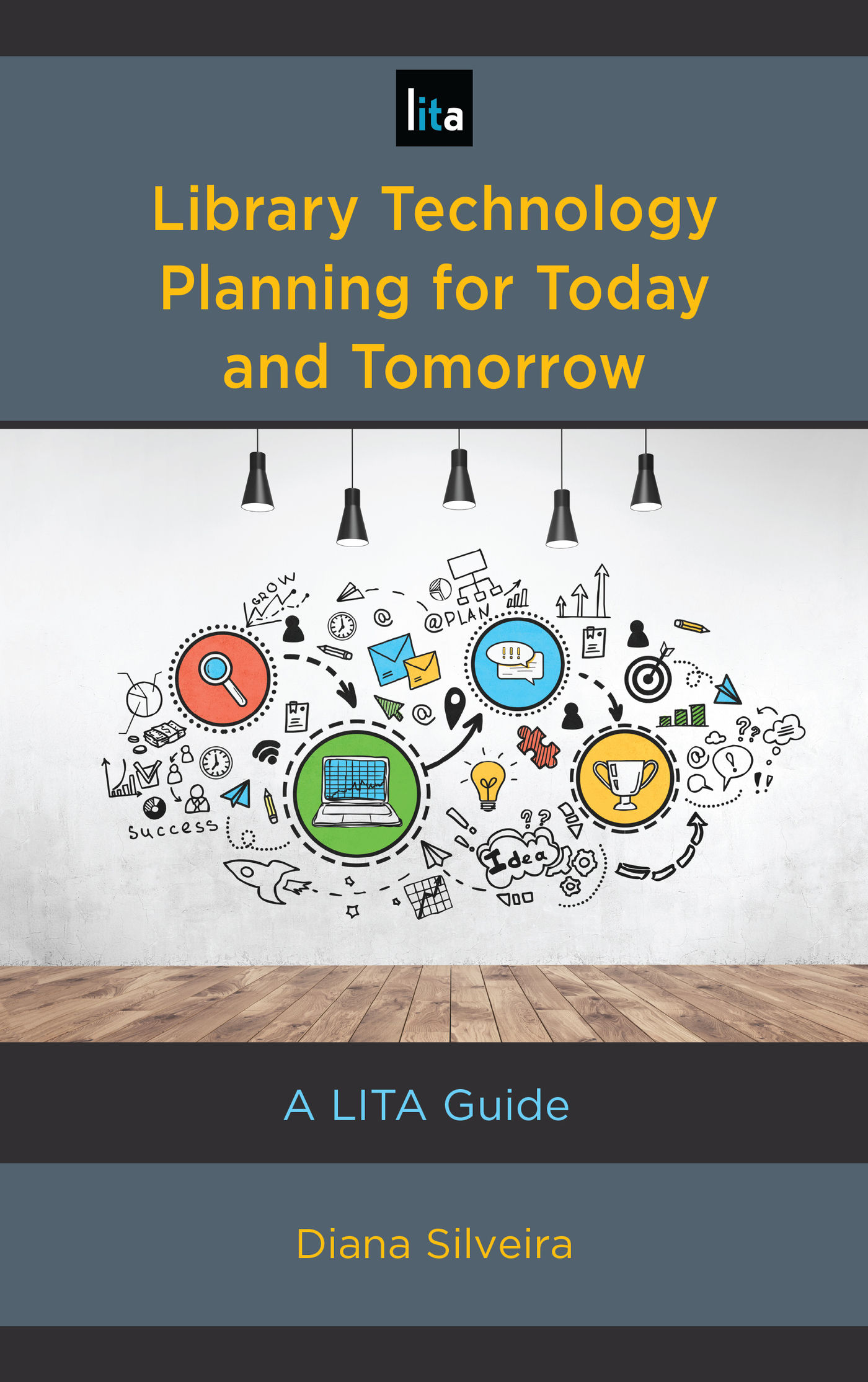Library Technology Planning for
Today and Tomorrow
LIBRARY INFORMATION TECHNOLOGY ASSOCIATION (LITA) GUIDES
Marta Mestrovic Deyrup, Ph.D.
Acquisitions Editor, Library Information and Technology Association, a division of the American Library Association
The Library Information Technology Association (LITA) Guides provide information and guidance on topics related to cutting-edge technology for library and IT specialists.
Written by top professionals in the field of technology, the guides are sought after by librarians wishing to learn a new skill or to become current in todays best practices.
Each book in the series has been overseen editorially since conception by LITA and reviewed by LITA members with special expertise in the specialty area of the book.
Established in 1966, LITA is the division of the American Library Association (ALA) that provides its members and the library and information science community as a whole with a forum for discussion, an environment for learning, and a program for actions on the design, development, and implementation of automated and technological systems in the library and information science field.
Approximately 25 LITA Guides were published by Neal-Schuman and ALA between 2007 and 2015. Rowman & Littlefield took over publication of the series beginning in late 2015. Books in the series published by Rowman & Littlefield are:
Digitizing Flat Media: Principles and Practices
The Librarians Introduction to Programming Languages
Library Service Design: A LITA Guide to Holistic Assessment, Insight, and Improvement
Data Visualization: A Guide to Visual Storytelling for Librarians
Mobile Technologies in Libraries: A LITA Guide
Innovative LibGuides Applications
Integrating LibGuides into Library Websites
Protecting Patron Privacy: A LITA Guide
The LITA Leadership Guide: The Librarian as Entrepreneur, Leader, and Technologist
Using Social Media to Build Library Communities: A LITA Guide
Managing Library Technology: A LITA Guide
The LITA Guide to No- or Low-Cost Technology Tools for Libraries
Big Data Shocks: An Introduction to Big Data for Librarians and Information
Professionals
The Savvy Academic Librarians Guide to Technological Innovation: Moving Beyond the Wow Factor
The LITA Guide to Augmented Reality in Libraries
Digital Curation Projects Made Easy: A Step-By-Step Guide for Libraries, Archives, and Museums
Library Technology Planning for Today and Tomorrow: A LITA Guide
Library Technology Planning for
Today and Tomorrow
A LITA Guide
Diana Silveira
ROWMAN & LITTLEFIELD
Lanham Boulder New York London
Published by Rowman & Littlefield
An imprint of The Rowman & Littlefield Publishing Group, Inc.
4501 Forbes Boulevard, Suite 200, Lanham, Maryland 20706
www.rowman.com
Unit A, Whitacre Mews, 26-34 Stannary Street, London SE11 4AB
Copyright 2018 by American Library Association
All figures created by the author unless otherwise noted.
All rights reserved. No part of this book may be reproduced in any form or by any electronic or mechanical means, including information storage and retrieval systems, without written permission from the publisher, except by a reviewer who may quote passages in a review.
British Library Cataloguing in Publication Information Available
Library of Congress Cataloging-in-Publication Data Available
ISBN 978-1-5381-0931-1 (hardback : alk. paper) | ISBN 978-1-5381-0932-8 (pbk. : alk. paper) | ISBN 978-1-5381-0933-5 (ebook)
 TM The paper used in this publication meets the minimum requirements of American National Standard for Information Sciences Permanence of Paper for Printed Library Materials, ANSI/NISO Z39.48-1992.
TM The paper used in this publication meets the minimum requirements of American National Standard for Information Sciences Permanence of Paper for Printed Library Materials, ANSI/NISO Z39.48-1992.
Printed in the United States of America
To my family, friends, and colleagues who have supported me
throughout my career.
List of Figures
Preface
The prospect of technology planning can seem overwhelming and time consuming, especially for those who work in an already short-staffed library. If this is your situation, you may be thinking,
We havent had a technology plan up to now, and things seem fine. Why change?
Theres not enough money to add new equipment, so why should we even bother with planning for technology?
Lets just continue to deal with technical issues as they arise.
Its easier to go with the flow and buy new technology when we have some extra funds.
The citys (or countys or school districts) information technology department handles technology for our library, so we dont need to worry about it.
Such thinking will prevent your library from becoming all that it could be. In truth, creating and implementing a technology plan can help you open the door to the modern era. Sound planning can lead to increased funding for technology in your library. Most important, a solid technology plan can help you create an environment that truly meets the needs of the community your library serves.
Lofty goals? Maybe so, but this is 100 percent true. Having a plan will allow you to prepare for the future instead of merely reacting to technology crises. Determining the technological needs of the library and its users will equip you to better allocate existing funds.
Library Technology Planning for Today and Tomorrow was created to help those who work in librariesespecially those who are new to the planning process. The objective of this book is to guide library staffs in working through the entire process of creating a customized technology plan. This LITA Guide will also show library staffs the importance of technology planning; it demonstrates how the process of creating and implementing a plan can help the library, its staff members and users, and the community as a whole. Designed to break down the planning process into manageable steps, it provides a practical and useful guide for the first-time planner. As readers work through each step in the process, they move closer to completing a plan that addresses the needs of their library and their community.
This LITA Guide was developed with knowledge Ive gained in more than fifteen years of working in libraries and with libraries as a trainer and consultant. As a former public librarian, Ive also worked with academic, school, and special libraries while on the staff of a multitype library consortium and as a consultant. As a library consultant, I have helped libraries of different types to use technology effectively.
My planning philosophy is simple: Planning should be a practical process that makes it easier to achieve your goals. Time is short and library funding is tight; both time and money must be applied reasonably if your library is to be successful. As consultant, Ive gained an outsiders perspective of the process of developing and successfully implementing technology plans. From this Ive identified the key areas on which a library must focus for success. This books practical nature, with each step clearly laid out, equips the time-crunched librarian to work logically through a planning process that will help the library accomplish its objectives.
Unity Library System

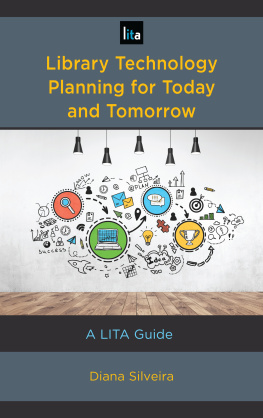
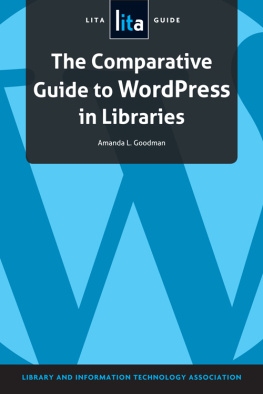
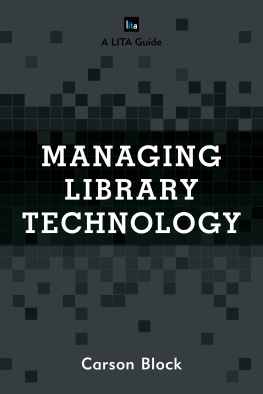

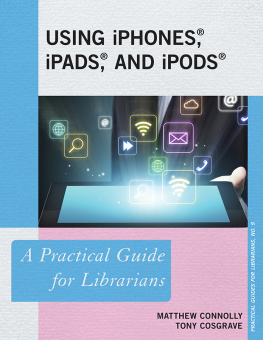

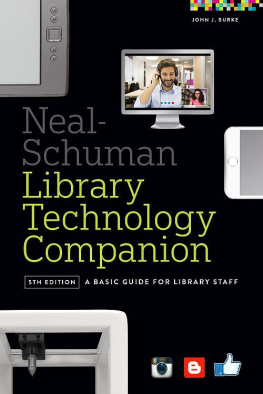

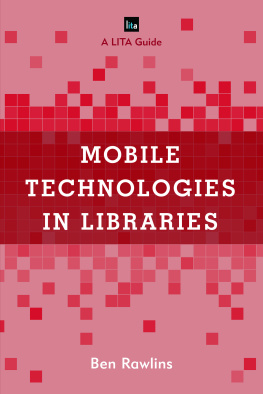
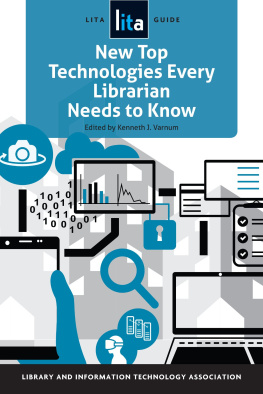
 TM The paper used in this publication meets the minimum requirements of American National Standard for Information Sciences Permanence of Paper for Printed Library Materials, ANSI/NISO Z39.48-1992.
TM The paper used in this publication meets the minimum requirements of American National Standard for Information Sciences Permanence of Paper for Printed Library Materials, ANSI/NISO Z39.48-1992.